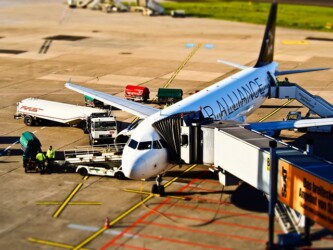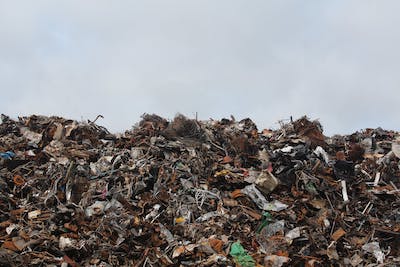Airports all over the world are trying to find new fuels that are better for the environment. In the UK, the aviation industry wants to have no carbon emissions by 2040, and the US and European Union have similar goals. One option they’re looking at is Sustainable Aviation Fuel (SAF), which some airlines already use. But SAF is expensive and not always easy to get. That’s why people are getting interested in hydrogen as a fuel. Hydrogen can store a lot of energy and doesn’t produce any CO2 when it’s used as fuel.
To use hydrogen in planes, it has to be in its liquid form, which means it has to be super cold, like -253C. But it’s hard to handle liquid hydrogen because it can easily turn into a gas and escape. So, things like tanks and pipes have to be extra-insulated to keep the hydrogen cold. A company called Air Liquide in France has experience with this kind of hydrogen and they’ve been looking into using it for planes. They’ve already flown a plane using liquid hydrogen and they think they can quickly deliver more hydrogen for refueling.
But it’s going to be expensive to set up the equipment needed to store and distribute hydrogen at airports. It could cost up to a billion dollars per airport. A start-up called Universal Hydrogen has a solution. They’ve made special tanks called modules that can hold liquid hydrogen. These modules can be taken to the airport by truck and connected directly to the plane’s engine, so they don’t need pipes or pumps. The modules are well-insulated and can keep the hydrogen liquid for four days. Universal Hydrogen is also changing a small plane to run on hydrogen and they plan to test it next year.
Hydrogen-powered planes are still in the early stages of development, so it’s not clear if they’ll become common in the future. There are problems, like not having enough space to store fuel in hydrogen planes and not having enough environmentally-friendly hydrogen. The aviation industry knows they need to stop producing emissions, but they’re not sure how to do it yet or how much it will cost. It might be a while before we see lots of hydrogen planes flying around.
Original news source: Could airports make hydrogen work as a fuel? (BBC)
Listen
Slow
Normal
Fast
Group or Classroom Activities
Warm-up Activities:
– News Summary
Instructions: In pairs or small groups, students will read the article and summarize the main points in their own words. They can take turns sharing their summaries with the class.
– Opinion Poll
Instructions: Students will be divided into groups and given a list of statements related to the article (e.g. “Hydrogen-powered planes are the future of aviation,” “Investing in hydrogen infrastructure is worth the cost”). They will discuss and share their opinions on each statement, and then present their group’s consensus to the class.
– Vocabulary Pictionary
Instructions: Students will be given a list of key vocabulary words from the article. In pairs, one student will choose a word and draw a picture representing it, while the other student tries to guess the word. They will take turns until all the words have been guessed.
– Pros and Cons
Instructions: Students will create a T-chart on a piece of paper or in their notebooks. They will list the pros and cons of using hydrogen as a fuel for planes based on the information in the article. Once they have completed their charts, they can discuss their lists in pairs or small groups.
– Future Predictions
Instructions: In pairs or small groups, students will discuss and make predictions about the future of hydrogen-powered planes. They can consider questions such as “Will hydrogen-powered planes become common in the future?” and “What challenges and opportunities do you foresee for this technology?” After their discussions, they can share their predictions with the class.
Comprehension Questions:
1. What are airports all over the world trying to find?
2. What is one option that airports are looking at as a better fuel for the environment?
3. Why is hydrogen difficult to handle in its liquid form?
4. What company in France has experience with using liquid hydrogen for planes?
5. How much could it cost to set up the equipment needed to store and distribute hydrogen at airports?
6. What solution does Universal Hydrogen have for storing and distributing hydrogen at airports?
7. What are some problems with hydrogen-powered planes?
8. Why might it be a while before we see lots of hydrogen planes flying around?
Go to answers ⇩
Listen and Fill in the Gaps:
Airports all over the world are (1)______ to find new fuels that are better for the environment. In the UK, the aviation industry wants to have no carbon (2)______ by 2040, and the US and European Union have similar (3)______. One option they’re looking at is Sustainable Aviation Fuel (SAF), which some airlines already use. But SAF is expensive and not always easy to get. That’s why (4)______ are getting interested in hydrogen as a fuel. Hydrogen can store a lot of energy and doesn’t produce any CO2 when it’s used as fuel.
To use hydrogen in (5)______s, it has to be in its liquid form, which (6)______ it has to be super cold, like -253C. But it’s hard to handle liquid hydrogen because it can easily turn into a gas and escape. So, things like tanks and pipes have to be extra-insulated to keep the hydrogen cold. A company called Air Liquide in France has experience with this kind of hydrogen and they’ve been looking into using it for planes. They’ve already flown a plane using liquid hydrogen and they (7)______ they can quickly (8)______ more hydrogen for refueling.
But it’s going to be expensive to set up the (9)______ needed to store and distribute hydrogen at (10)______. It could cost up to a billion dollars per airport. A start-up called Universal Hydrogen has a (11)______. They’ve made special (12)______ called modules that can hold liquid hydrogen. These modules can be taken to the airport by truck and connected directly to the plane’s engine, so they don’t need pipes or pumps. The modules are well-insulated and can keep the hydrogen liquid for four days. Universal Hydrogen is also changing a small plane to run on hydrogen and they plan to test it next year.
Hydrogen-powered (13)______ are still in the early stages of development, so it’s not clear if they’ll become (14)______ in the future. There are problems, like not having (15)______ space to store fuel in hydrogen planes and not having enough environmentally-friendly hydrogen. The aviation industry (16)______ they need to stop producing emissions, but they’re not sure how to do it yet or how much it will cost. It might be a while before we see lots of hydrogen planes flying around.
Go to answers ⇩
Discussion Questions:
Students can ask a partner these questions, or discuss them as a group.
1. What is Sustainable Aviation Fuel (SAF) and why is it important for airports to use?
2. How do you think hydrogen can help reduce carbon emissions in the aviation industry?
3. Do you think it is a good idea to use hydrogen as a fuel for planes? Why or why not?
4. How would you feel if all airports had no carbon emissions by 2040? Why?
5. What are some advantages of using liquid hydrogen as a fuel for planes?
6. What are some challenges or problems that the aviation industry might face in using hydrogen-powered planes?
7. Do you think it is worth the cost to set up equipment for storing and distributing hydrogen at airports? Why or why not?
8. How do you think the development of hydrogen-powered planes could impact the environment?
9. What are some potential benefits of using modules to hold liquid hydrogen instead of pipes and pumps?
10. How do you think the use of hydrogen as a fuel could change the aviation industry in the future?
11. Do you think hydrogen-powered planes will become common in the future? Why or why not?
12. How would you feel if you saw a hydrogen-powered plane flying in the sky? Why?
13. What are some other ways that the aviation industry could reduce carbon emissions?
14. Do you think it is important for the aviation industry to prioritize finding environmentally-friendly solutions? Why or why not?
15. How do you think the development of hydrogen-powered planes could impact the global effort to combat climate change?
Individual Activities
Vocabulary Meanings:
Match each word to its meaning.
Words:
1. fuels
2. emissions
3. hydrogen
4. liquid
5. equipment
6. modules
7. development
8. planes
Meanings:
(a) Vehicles that can fly in the sky
(b) A state in which a substance takes the form of a fluid
(c) Substances used to power vehicles or machines
(d) Tools or machinery needed for a particular purpose
(e) A gas that can be used as a clean fuel source
(f) The process of creating or improving something over time
(g) Gases or particles released into the air, especially from burning fuel
(h) Special containers that can hold and transport liquid hydrogen
Go to answers ⇩
Multiple Choice Questions:
1. What is one option that airports are considering to reduce carbon emissions?
(a) Diesel fuel
(b) Sustainable Aviation Fuel (SAF)
(c) Natural gas
(d) Coal
2. Why is hydrogen being considered as a fuel for planes?
(a) It doesn’t produce any CO2 when used as fuel.
(b) It is cheaper than other fuels.
(c) It is readily available in large quantities.
(d) It is easier to handle than other fuels.
3. What temperature does hydrogen need to be in its liquid form?
(a) -253C
(b) -100C
(c) 0C
(d) 100C
4. Why is it difficult to handle liquid hydrogen?
(a) It is highly flammable.
(b) It is toxic to humans.
(c) It is too heavy to transport.
(d) It can easily turn into a gas and escape.
5. How is Air Liquide in France involved in the use of hydrogen for planes?
(a) They have developed a new type of hydrogen fuel.
(b) They have already successfully flown a hydrogen-powered plane.
(c) They are working on creating more environmentally-friendly hydrogen.
(d) They have experience with handling liquid hydrogen.
6. What is the estimated cost to set up hydrogen storage and distribution equipment at airports?
(a) A few million dollars per airport.
(b) A few hundred thousand dollars per airport.
(c) Up to a billion dollars per airport.
(d) It is not mentioned in the article.
7. What solution has Universal Hydrogen developed for storing and transporting liquid hydrogen?
(a) Large pipelines.
(b) Underground storage facilities.
(c) Special tanks called modules.
(d) Portable containers.
8. What are some challenges that need to be overcome for hydrogen-powered planes to become common?
(a) Lack of interest from airlines and high production costs.
(b) Limited space for fuel storage and lack of environmentally-friendly hydrogen.
(c) Difficulty in handling liquid hydrogen and lack of infrastructure.
(d) Safety concerns and lack of government support.
Go to answers ⇩
True or False Questions:
1. Airports worldwide are searching for eco-friendly fuel alternatives.
2. Hydrogen is gaining interest as a potential fuel due to its energy storage capabilities and zero CO2 emissions.
3. Liquid hydrogen is required for use in planes, which must be kept at extremely low temperatures.
4. Sustainable Aviation Fuel (SAF) is not being considered as an option, as it is affordable and easily accessible.
5. Setting up hydrogen storage and distribution equipment at airports could cost less than a billion dollars per airport.
6. The UK aviation industry has no plans to achieve zero carbon emissions by 2040.
7. Air Liquide, a French company, has experience with liquid hydrogen and is exploring its use in aviation.
8. Handling liquid hydrogen is not challenging as it cannot easily turn into a gas and escape.
Go to answers ⇩
Write a Summary:
Write a summary of this news article in two sentences.
Check your writing now with the best free AI for English writing!
Writing Questions:
Answer the following questions. Write as much as you can for each answer.
Check your answers with our free English writing assistant!
1. What are airports all over the world trying to find?
2. What is one option that the aviation industry is looking at for a better fuel?
3. Why is it difficult to handle liquid hydrogen?
4. How is Air Liquide in France involved in using hydrogen for planes?
5. What is one solution that Universal Hydrogen has come up with for storing and distributing hydrogen at airports?
Answers
Comprehension Question Answers:
1. Airports all over the world are trying to find new fuels that are better for the environment.
2. One option that airports are looking at is Sustainable Aviation Fuel (SAF).
3. Hydrogen is difficult to handle in its liquid form because it can easily turn into a gas and escape.
4. The company in France that has experience with using liquid hydrogen for planes is Air Liquide.
5. It could cost up to a billion dollars per airport to set up the equipment needed to store and distribute hydrogen.
6. Universal Hydrogen has made special tanks called modules that can hold liquid hydrogen. These modules can be taken to the airport by truck and connected directly to the plane’s engine, so they don’t need pipes or pumps.
7. Some problems with hydrogen-powered planes include not having enough space to store fuel and not having enough environmentally-friendly hydrogen.
8. It might be a while before we see lots of hydrogen planes flying around because the technology is still in the early stages of development and there are still challenges to overcome.
Go back to questions ⇧
Listen and Fill in the Gaps Answers:
(1) trying
(2) emissions
(3) goals
(4) people
(5) plane
(6) means
(7) think
(8) deliver
(9) equipment
(10) airports
(11) solution
(12) tanks
(13) planes
(14) common
(15) enough
(16) knows
Go back to questions ⇧
Vocabulary Meanings Answers:
1. fuels
Answer: (c) Substances used to power vehicles or machines
2. emissions
Answer: (g) Gases or particles released into the air, especially from burning fuel
3. hydrogen
Answer: (e) A gas that can be used as a clean fuel source
4. liquid
Answer: (b) A state in which a substance takes the form of a fluid
5. equipment
Answer: (d) Tools or machinery needed for a particular purpose
6. modules
Answer: (h) Special containers that can hold and transport liquid hydrogen
7. development
Answer: (f) The process of creating or improving something over time
8. planes
Answer: (a) Vehicles that can fly in the sky
Go back to questions ⇧
Multiple Choice Answers:
1. What is one option that airports are considering to reduce carbon emissions?
Answer: (b) Sustainable Aviation Fuel (SAF)
2. Why is hydrogen being considered as a fuel for planes?
Answer: (a) It doesn’t produce any CO2 when used as fuel.
3. What temperature does hydrogen need to be in its liquid form?
Answer: (a) -253C
4. Why is it difficult to handle liquid hydrogen?
Answer: (d) It can easily turn into a gas and escape.
5. How is Air Liquide in France involved in the use of hydrogen for planes?
Answer: (d) They have experience with handling liquid hydrogen.
6. What is the estimated cost to set up hydrogen storage and distribution equipment at airports?
Answer: (c) Up to a billion dollars per airport.
7. What solution has Universal Hydrogen developed for storing and transporting liquid hydrogen?
Answer: (c) Special tanks called modules.
8. What are some challenges that need to be overcome for hydrogen-powered planes to become common?
Answer: (b) Limited space for fuel storage and lack of environmentally-friendly hydrogen.
Go back to questions ⇧
True or False Answers:
1. Airports worldwide are searching for eco-friendly fuel alternatives. (Answer: True)
2. Hydrogen is gaining interest as a potential fuel due to its energy storage capabilities and zero CO2 emissions. (Answer: True)
3. Liquid hydrogen is required for use in planes, which must be kept at extremely low temperatures. (Answer: True)
4. Sustainable Aviation Fuel (SAF) is not being considered as an option, as it is affordable and easily accessible. (Answer: False)
5. Setting up hydrogen storage and distribution equipment at airports could cost less than a billion dollars per airport. (Answer: False)
6. The UK aviation industry has no plans to achieve zero carbon emissions by 2040. (Answer: False)
7. Air Liquide, a French company, has experience with liquid hydrogen and is exploring its use in aviation. (Answer: True)
8. Handling liquid hydrogen is not challenging as it cannot easily turn into a gas and escape. (Answer: False)
Go back to questions ⇧













